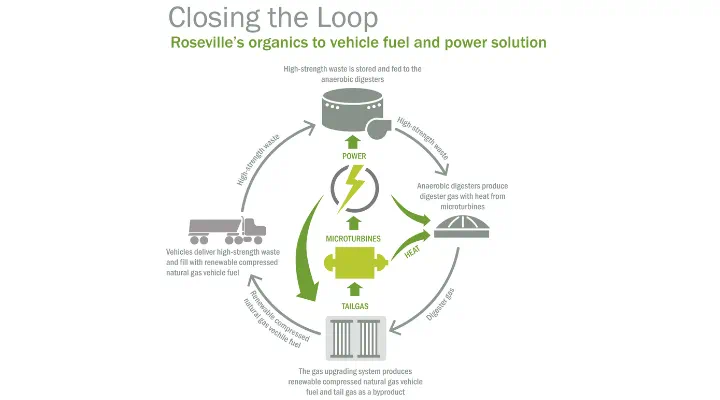The City of Roseville is now powering its recycling vehicles from renewable natural gas (RNG) derived from the digestion of organic waste.
A waste to energy upgrade
The city of Roseville in California is now converting its wastewater into fuel to help power its waste and recycling trucks.
As part of an expansion to its Pleasant Grove Wastewater Treatment Plant (PGWWTP), owned and operated by the city, Roseville developed an energy recovery project to upgrade the site into a waste to energy facility capable of producing renewable natural gas (RNG) fuel.
Environmental engineering firm Brown and Caldwell was hired to design the biofuel production facility.
“We have come full circle with managing our integrated utility service to benefit our community,” said Roseville’s environmental utilities director, Richard Plecker.
How does the waste to energy plant work?
As part of the development, two new anaerobic digestion (AD) units were installed to stabilise wastewater solids generated in the treatment process.
A receiving facility was constructed to accept high-strength organic wastes, including fats, oils, and greases, directly into the anaerobic digesters, maximising digester gas production for RNG conversion and diverting up to 12,000 tons (10,886 tonnes) of high-strength organic waste per year from landfill.

Four microturbine co-generation units produce electricity to help power the gas conversion process and provide heat for the anaerobic digesters.
By running its solid waste collection fleet (approximately 47 trucks) via a new on-site RNG fueling facility and ceasing diesel use, it’s estimated the city will reduce greenhouse gas emissions by about 7,000 metric tons of CO2 equivalents per year, equal to planting more than 270,000 trees.
Wastewater transformation vision
“We applaud the city for its vision and follow-through in transforming its wastewater treatment process into a highly sustainable, energy-efficient operation,” said Adam Ross, VP at Brown and Caldwell.
The project will also earn credits through the Low Carbon Fuel Standard program as it lowers NOx emissions by five metric tons per year.
Furthermore, generating electricity with microturbines made the project eligible for the Clean Water State Revolving Fund Green Project Reserve, which incentivises projects that address water or energy efficiency and reduces costs for utility customers.
Elsewhere, a wastewater treatment plant in southern France was recently upgraded to generate twice as much energy as it consumes.







